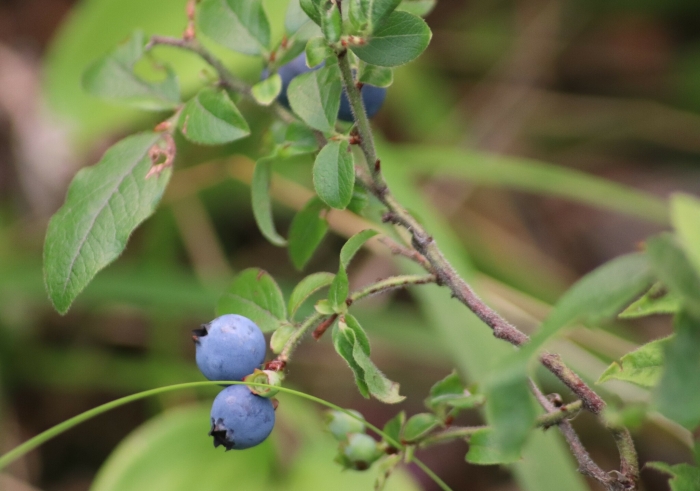Velvetleaf Huckleberry
(Vaccinium myrtilloides)
Velvetleaf Huckleberry (Vaccinium myrtilloides)
/
/

Sean Frey
CC BY 4.0















Estimated Native Range
Summary
Velvetleaf Huckleberry is appreciated for its ornamental value, particularly its attractive foliage and fruit. It is used in naturalistic plantings, as a ground cover in woodland gardens, and for erosion control on slopes. This shrub prefers acidic, well-drained soils and can tolerate partial shade, although it produces the best fruit in full sun. It requires consistent moisture and does not tolerate drought well. While generally low-maintenance, it can be susceptible to fungal diseases such as leaf spot and rust. Velvetleaf Huckleberry is not known for aggressive roots or significant pest issues. It is also valued for its potential health benefits, as the berries are rich in antioxidants.CC BY-SA 4.0
Plant Description
- Plant Type: Shrub
- Height: 1-1.75 feet
- Width: 2-3 feet
- Growth Rate: Slow, Moderate
- Flower Color: Pink, White
- Flowering Season: Spring, Summer
- Leaf Retention: Deciduous
Growth Requirements
- Sun: Full Sun, Part Shade
- Water: Medium
- Drainage: Fast
Common Uses
Bird Garden, Edible*Disclaimer: Easyscape's listed plant edibility is for informational use. Always verify the safety and proper identification of any plant before consumption., Groundcover, Low Maintenance, Street Planting, Water Garden
Natural Habitat
Cool temperate regions of North America, including forested bogs, open coniferous woods, and rocky areas
Other Names
Common Names: Velvetleaf Blueberry, Sourtop Blueberry, Sourtop, Velvetleaf Huckleberry, Canadian Blueberry, Velvet-Leaved Blueberry
Scientific Names: , Vaccinium myrtilloides, Cyanococcus canadensis, Vaccinium album, Vaccinium angustifolium var. myrtilloides, Vaccinium canadense, Vaccinium canadense, Vaccinium myrtilloides f. myrtilloides,
GBIF Accepted Name: